Introduction:
The purchase of a sewing machine is comparable to the purchase of a power tool and a precision device simultaneously: an inappropriate purchase will cost both money and time, and a finding that fits perfectly will make sewing faster, neater and fun. This guide will take you through specific, practical tests you can do in the shop, what characteristics are important in 2025, what to avoid, and how to compare machines easily and fairly — whether you sew garments, quilts, crafts or you do a few occasional repairs.
1) Discover your true use case (5 minute clarity)
Before you put your hands on a machine, decide what it is you are actually going to be doing in the next 12-24 months:
Garments/ Alterations: knits, woven, button holes, zippers, hem jeans.
Quilting; long seams, precision in the piecing, smooth feeding, among others, enlarged throat space.
Heavy/Utility: canvas, denim seams, vinyl and simple upholstery.
Embroidery/Applique: decorative stitching, control of the satin stitch, optional modules.
Running a business: dependability, speed regulation, access to services and spares.
List 3 things that need to happen (e.g. clean knit seams, handles denim hems, quiet at night), and then test only those 3 things.
2) Core selection machine type position
Mechanical domestics (dials, no screen): rugged, basic, less costly, better straight/zigzag and simple buttonholes; less convenience.
screen, buttons (computerized domestics): fine needle control, automatic buttonholes, memory, speed limit, knit/precision work.
Heavy workman domestics (as a rule still stronger motor/metal frame): can take another pound of heavy seam, still no industrial.
Heavy-duty domestics (usually made more stout motor/metal frames): can handle thicker seams yet not industrial.
Serge/Overlocked (subsidiary): to professionally finish edges and stretch seams.
Overstitch (completely optional): use on T-shirt style hems.
Embroidery combo: sewing combined with embroidery; more difficult, check the hoop size, software and update service.
Select the least complex machine that addresses your full use case complexity you do not need is future pain.
3 What is new/important in 2025
Brushless DC motors and & better controllers: More Inchworm low-speed crawl; enhanced control: better torque; test to 1-2 stitches-per-second control.
LED lighting: cool and bright, little shadow; use several LEDs surrounding the needle.
Smarter buttonholes: one-step sensor cycles; test uniform appears consistent across fabrics.
Adjustable feed; 7-9 point feed dog, box type feeder or similar; test hands-off tracking.
Firmware/feature upgrades (of computerized models): inquire how upgrades are sent; ensure presence of local support.
Environmental friendliness, reparability: metal inner structure, easy to reach bobbin casing, spare parts supply available.
4) What to carry to the shop
Put a handy zip pouch:
Swatches of fabric: quilting cotton, denim (2 layers + a seam), light knit Jersey, chiffon /organza, vinyl/ leather offcut.
Thread you intend to use (all-purpose polyester), and cones to test serge, should you have one.
Needles: MICROTEX 70/10, UNIVERSAL 80/12, Jeans 90/14, BALLPOINT/STRETCH 75/11 (shop can supply, bring with you however).
Vibration test-small ruler/tape, a coin and your checklist.
5) Inspection through touch (2minutes)
Frame & build: weigh light; some weight is well (metal frame). Not all light is bad, but flimsy flex is the warning sign.
Needle bar/ presser foot play: with power off, lower the needle; attempt to wiggle it forward-to-back, it should not move very far (<1 mm). Presser foot must fall and land to the floor easily.
Handwheel: move the hand wheel slowly, and there should be no gritty places nor scraping.
Bobbin system: drop-in bobbin is usual; examine check cover hinges, bobbin clarity, the ease of threading. Side-loading can be good when very robust.
6) Baseline power-on tests
Idling noise: it needs to be soft and steady with no vibrations or buzz, no burning smell.
Start/stop control: foot pedal must be responded immediately; check needle up/down button.
Lighting: is the needle section well light, with little shadows?
7) Low speed control / pedal feel
This is more than top speed. Be thou enthused to stitch on cotton:
Attempt to crawl at 12-2 stitches a second. In case it leaps, the controller is primitive.
Use pedal press at medium speed gradually; you need your ramp to be smooth without dead zone.
In case of speed limiter, then keep the setting at minimum and repeat.
8) Stitch testing (these tests in order)
A Straight stitch on cotton
Medium in length (2.42. 6 mm). Stitches should not be puckered; not flagged (bounced-in holes).
Flip fabric: that area where the top and bottom threads seize within the fabrics, rather than resting on either side of it. Fine tune tension.
B. Zig zag on cotton and knit
3-5 mm wide, ~1,5 mm long. The stitches must not look like they are tunneling into the fabric.
On knit jersey use a ballpoint/stretch needle and a stretch stitch or narrow zigzag; do not pull seam hard, no popped stitches.
C. Medium weight fabric- denim
Apply two layers, and embark on a folded seam (4-6 at the hump). Needle: use jeans 90/14.
Machine must traverse the hump by Hump Jumper/compensation plate and Presser foot assembly level adjustment. Seek short and uniform lengths of the stitches or the lack of the motor stalling.
D. Fine /light material /chiffon
Needle microtia 70/10. Observe whether the machine has a straight stitch needle plate or not and use it where you do not force fabric into the needle hole.
Minimum puckering; tissue test used, when needed. This is controlled by correct settings on quality machines.
E. Buttonhole cycle
Auto one-step can be used, when available. On cotton, make 2 buttonholes and on denim make 1. They are to commence/conclude in a tidy manner, be symmetrical and not be bird-nested into apprehension at the beginning.
F. Ornamental stitches (Assuming you will want to use them).
The few patterns stitched; the clean edges and even density are checked at medium speed.
9) Feeding-tracing (hands off test)
Cotton under the presser foot:
Stitch an 15-20 cm straight, not touching the fabric. Proper feed systems make it straight; the trouble indicates foot pressure or line-up of the feed.
Change presser foot pressure: decrease (knit/chiffon) and increase, (denim). The difference is easy to confirm.
Test easy fabrics (provided), with a walking foot/dual feed (IDT, Accused, etc.) capable of layered fabrics; stitches must be uniform with no creep.
10) Some time saving ease-of-use features
Top-loading bobbin and you can see thread level.
Self-threading needle – Just press the release button, three times.
Needle down/needle up, lock stitch, long se seams start/stop button.
Speed limiter (perfect on beginners, as well as detail work).
Knee lifter (game changer to quilting/garments).
Sleeves/Hem free arm.
Free-motion quilting or darning drop feed.
Presser foot pressure adjustable (large differentiator).
HP/precision foot, straight stitch plate selections make perfect piecing.
On electronic machines:
Clear screen display with stitch preview; very simple navigation.
Favorite stitch recall; mirror/elongation things.
Alphabets when you will label/monogram.
After power off check settings persistence.
11) Throat space, table and lighting
Measuring the harp (throat) space-left of the body to the b approx.. 2 inches. More space presents less wrestling on quilting or a bulky project.
Request to have extension table; it enhances support of the fabric. It must be well lit with bright, even light; a number of separately placed LEDs around the needle is the best solution.
12) The technical necessities (which stores swept under the carpet)
Type of motors and torque: smooth low-speed power, rather than the pure speed. It is a bonus to have brushless DC motors.
Hook system: the horizontal drop-in hooks are quiet, vertical are okay with good fit.
Stitch plate opening: good on single hole straight plate, enhancement of fine fabrics and piecing. Make sure it is in stock.
Quality of tension units: invariability, reliable reaction to slight perturbations.
Access to service: is it easy (to a tech person) to open/clean/oil the hook area?
10) Some time saving ease-of-use features
Top-loading bobbin and you can see thread level.
Self-threading needle – Just press the release button, three times.
Needle down/needle up, lock stitch, long se seams start/stop button.
Speed limiter (perfect on beginners, as well as detail work).
Knee lifter (game changer to quilting/garments).
Sleeves/Hem free arm.
Free-motion quilting or darning drop feed.
Presser foot pressure adjustable (large differentiator).
HP/precision foot, straight stitch plate selections make perfect piecing.
On electronic machines:
Clear screen display with stitch preview; very simple navigation.
Favorite stitch recall; mirror/elongation things.
Alphabets when you will label/monogram.
After power off check settings persistence.
11) Throat space, table and lighting
Measuring the harp (throat) space-left of the body to the b approx.. 2 inches. More space presents less wrestling on quilting or a bulky project.
Request to have extension table; it enhances support of the fabric. It must be well lit with bright, even light; a number of separately placed LEDs around the needle is the best solution.
12) The technical necessities (which stores swept under the carpet)
Type of motors and torque: smooth low-speed power, rather than the pure speed. It is a bonus to have brushless DC motors.
Hook system: the horizontal drop-in hooks are quiet, vertical are okay with good fit.
Stitch plate opening: good on single hole straight plate, enhancement of fine fabrics and piecing. Make sure it is in stock.
Quality of tension units: invariability, reliable reaction to slight perturbations.
Access to service: is it easy (to a tech person) to open/clean/oil the hook area?
18) Second hand/used machine checks (in case tempted)
Stitches (or stitches per hour) (computerized), service history.
Examine the bobbin section: you may see rust or lint cakes or scoring on the hook.
Feed dogs must be in good condition, sharp teeth.
Time check fast: hand-turn at point of stitch to note that as hook tip reaches bottom dead center it is just passing the needle scarf.
Take all the above tests; haggle over servicing if anything is out.
19) Warranty, service & parts (and don t miss)
Written provisions: number of years on mechanical vs electrical; coverage of labor.
Local service center: location and average (turn around) time.
Loaners when under repairs (nice to have).
Computerized models firmware upgrades & availability of spare parts of 5 10 years.
20) Environment & power
Make sure that machine is compatible with your mains power (most are 220240 V/50 Hz in many places).
Move to surge protector or UPS, should you experience voltage spikes.
Quiet machines and good LEDs work best when you face a tight spot or in the evening.
21) Head to head comparison approach (rapid matrix)
Have a score of the 10 points to each machine:
Build quality
Low-speed control
Quality straight stitches
Knit/zig/Stretch quality
Heavy-fabric ability
Buttonholes
Feeding/track
Noise & vibration
Ease-of-use features
P/warranty/support
Assign each 1-10 in your exams. It is clear who wins when you put some distance.
22) Smart negotiation, buying
Request bundle add-ons: walking foot, extension table, extra needles, bobbins and service voucher or beginners course.
Compare promos to longer warrantees- in some cases it is worth more to add options than take a nibble off the price.
Test return/ exchange policy and DOA (dead on arrival).
🎯 Conclusion
The thing is, the best sewing machine isn’t always the one with the longest set of features. The most important thing about a sewing machine is being able to sew up your fabrics in a smooth, smooth way, at your own optimum speed, with an assurance that the machine can be serviced in your area.
2025: focus on:
Low-speed smooth control.
Stable and feed intensive fabric.
Even stitch tension of different fabrics.
Handy options: auto buttonholes, needle up/down, variable pressure and illumination LED.
Bring your own cloths, stick to this test routine, test each machine objectively and haggle on the accessories that you will use most. Do this and you will buy once, sew with confidence and regret no upgrades.
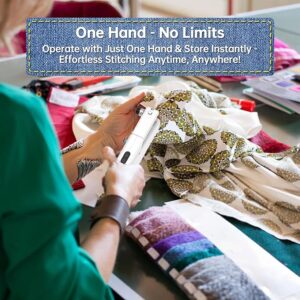
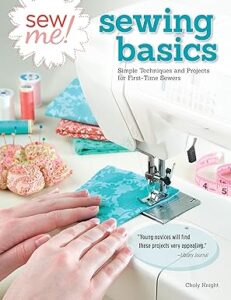

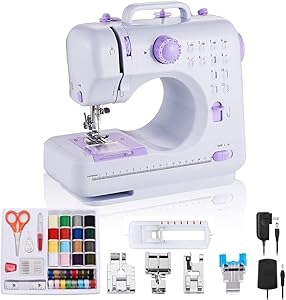
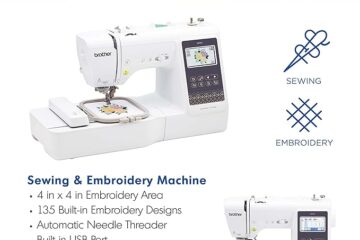
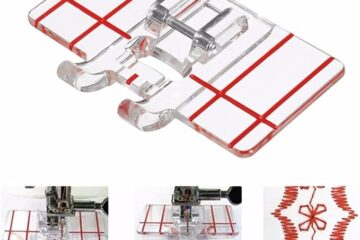
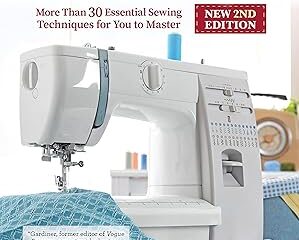
0 Comments